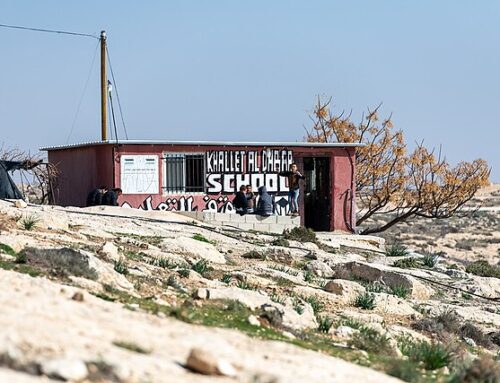| I’m your new blogger, Peter Eisenstadt. |
The lead article in the latest issue of the London Review of Books, is a sobering account of recent developments in Syria (are there any other kind?), headlined, “Is This the End of Sykes-Picot?” Its author, the superb Middle East journalist Patrick Cockburn, makes an argument that has been increasingly heard recently–that the enormous centrifugal political and social forces that have been unleashed in Syria might finally scramble the wobbly, jerry-rigged national boundaries that were established in the wake of World War I.
(The Sykes-Picot Agreement, for those who need a refresher, was the secret 1916 agreement between the British and French governments, represented respectively by diplomats Sir Mark Sykes and Georges Picot, detailing how to divvy up the spoils of the Ottoman Empire. In every history of Zionism that I have ever read, it is the opening act to the Balfour Declaration. And speaking of the theater, I have long thought of Sykes and Picot and their peers as the forerunners of Zero Mostel and Gene Wilder in The Producers, promising about 400% of the available land in the Middle East to various groups of Sunnis, Shiites, Christians, Jews, Alawites, and Hashemites, helping to create a mess we are still trying to untangle.)
Even sub-national borders are often very difficult to change. In the United States there have been significant changes to the boundaries of states only twice: in 1820, when Maine split from its non-coterminous parent state of Massachusetts, and in 1863, when, under the pressure of the Civil War, Virginia and West Virginia went their separate ways. Pundits can decry the irrationality of the state boundaries and the makeup of the US Senate all they want—it is the most badly proportioned legislative body in the world, where, on a per capita basis, a citizen of Wyoming has 70 times as much representation as a citizen of California–we are stuck with the current boundaries of the fifty states and their political consequences for perpetuity.
Since this is my first post for Partners for Progressive Israel, let me give an abbreviated version of my Middle East credo. There is no one-state solution; if by a “one-state solution” one means a unitary democratic and egalitarian state between the Jordan and the Mediterranean, it is an impossibility. Israel will never agree to it voluntarily, and there is no way, save an unimaginably bloody and probably nuclear war, to create a scenario by which Israel will be compelled to accept it. And whatever a de jure Israeli annexation of the West Bank is–apartheid or whatever–it is not, despite what one often reads, a one-state solution, since it will solve nothing. It is a one-state problem.
Let me present two axioms that have long governed my view of the prospects of peace between Israel and Palestine.
- Axiom 1: All colonial situations, such as the West Bank, in which sovereignty has no underlying legitimacy and is maintained solely by explicit or implicit use of military force are inherently unstable, and they all end–peacefully or otherwise. And though the colonial power usually maintains the illusion that its military superiority will enable it to maintain the status quo indefinitely, this is almost always an illusion. This is why there are almost no remaining colonial occupations left in the world today.
- Axiom 2: The most difficult colonial situations to unwind are those in which the colonizer and the colonized are geographically adjacent, and situations in which the colonizer has established settler enclaves among the colonized population, such as the situation between Great Britain and Ireland, or between Israel and Palestine.
And there are many examples, such as the former Yugoslavia, or the empires of the Ottomans or the Hapsburgs, that, depending on how the example is framed, can be seen as exemplifying the virtues of national division along ethnic lines or maintaining supra-ethnic sovereignty. The larger point is that the political and geographic arrangements between contending national groups are perhaps less important than the undeniable reality that they will someday have to find a way to live together, or destroy one another.
Getting back to Israel and Palestine, the differences between one- and two-state solutions can easily be fetishized. The reality, which everyone on some level knows, is that international or constitutional arrangements, and lines on the map, will only go so far and do so much. Unless both sides make a conscious and difficult choice to do so, nothing can or will prevent Israel and Palestine from living in a state of perpetual war. And getting them to make that choice needs to be the goal of all people who want to see the occupation end and Israel at peace with its neighbors and at peace with itself.






Excellent blog post.
Kol hakavod, Peter. Looking forward to your future posts.
I think it is essential that we keep stressing the following which reinforces Peter’s message:
While it will be difficult to obtain, Israel needs a comprehensive, sustainable 2-state resolution of her conflict with the Palestinians in order to avert renewed violence, effectively respond to her economic, environmental, and other domestic problems, and to remain both a Jewish and democratic state. Failure to obtain such a resolution will result in a very negative future for Israel, the Palestinians, the US, and, indeed, much of the world. This is not only my view, but also that of many Israeli strategic experts, including all the living retired heads of the Shin Bet. Don’t believe it? Please see the Israeli Academy Award-nominated movie, “The Gatekeepers.”